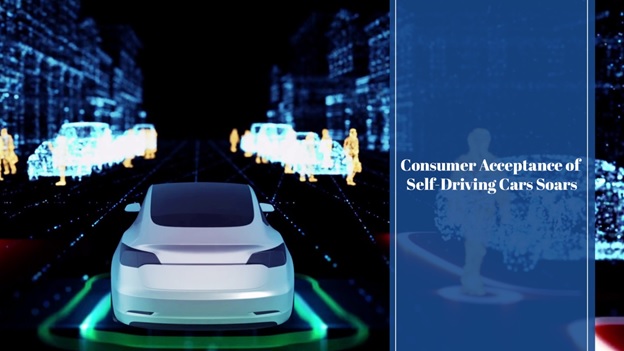Autonomous things (AuT) also known as Internet of Autonomous Things or (IoAT), can be defined as an emerging technological trend which has been in development since the first ever autonomous car was showcased in 1925 by Houdina Radio Control where they installed a radio antenna on top of a 1926 Chandler vehicle; connected with a second vehicle following behind and operating the forward vehicle through the help of signal transmissions. These signal transmissions were then forwarded to circuit-breakers handling the electric motors of the forward vehicle thereby resulting in its movement. Autonomous things basically means that the devices, electrical components are termed as stand-alone entities alongside humans in the physical environment where they have been equipped with the capabilities of performing actions and interacting with objects present in their surroundings. The technology is fairly recent and still in development due to the advancements that humans have experienced in artificial intelligence and machine learning. It is estimated that the widest commercially available use of autonomous technology will be seen in autonomous vehicles which are expected to hit the market by 2020. The autonomous vehicles incorporate the data generated and captured from various radars, sonar, LiDAR, GPS, motion sensors, inertial measurement units and various other technologies to make the decisions and provide movement to the vehicles. Autonomy in vehicles can be defined in different stages based on the control that the artificial intelligence is given over the vehicle. Level 0 or No Automation – It basically comprises of all the vehicles available currently commercially where no levels of control is given to the artificial intelligence, the sensors incorporated in the vehicles are only present to warn the user regarding the performance of the vehicle systems. Level 1 or Driver Assistance – This level involves giving control of one aspect of the vehicle to artificial intelligence such as braking system & throttle or steering & movement of the vehicle, although the condition with this level is the requirement of driver being ready to take over the controls at any given amount of time. Level 2 or Partial Assistance – This levels provides the driver assistance system with movement/steering of the vehicle as well as braking & throttle systems, although even with this level of autonomy, driver needs to be alert regarding the environment and ready to take over at any point of time. Level 3 or Conditional Assistance – Through the implementation of this technology, the vehicle has complete control of the vehicle they can change the lanes, increase or decrease the speed in certain situations but the speed limit of the vehicle and traffic is a maximum of 60km/h on roadways. Level 4 or High Assistance – This assistance provides complete automation of the vehicles, resulting in continuous monitoring of its surroundings and analysis of the data generated through a variety of sensors incorporated with the vehicle. This results in total and complete control of braking, throttle and steering system till the point where the vehicle encounters a situation they cannot handle where they will require the assistance of the driver, wherein if they are not available the vehicle will analyze the situation and react accordingly with the safest option possible. Level 5 or Full Assistance – This level of autonomy is defined by the complete automation of the vehicle where not even a human is required to be present onboard the vehicle, where the basic steering wheel, brake and throttle pedals are not required to be present on board the vehicle, they perform the operations in any conditions and on any roadway.  Conclusion & Impact Autonomous things and more prominently autonomous vehicles will be seen in wide-spread action in the upcoming years with the advancements of cloud technology, big data, artificial intelligence, it is said that this rampant speed of development will require the humans and architects of this technology to keep pace with the technological advancements, developing new avenues of storage of information and algorithms which will allow the vehicles to operate freely and without the need of human intervention or restrictions upon them. The impact of autonomous vehicles as of yet is still not assured, but it is expected that
Conclusion & Impact Autonomous things and more prominently autonomous vehicles will be seen in wide-spread action in the upcoming years with the advancements of cloud technology, big data, artificial intelligence, it is said that this rampant speed of development will require the humans and architects of this technology to keep pace with the technological advancements, developing new avenues of storage of information and algorithms which will allow the vehicles to operate freely and without the need of human intervention or restrictions upon them. The impact of autonomous vehicles as of yet is still not assured, but it is expected that
- With the growing popularity of autonomous vehicles; cabs and ride-sharing services will be positively affected due to the adoption of autonomous vehicles in their fleet which will affect the quality of public transport services, and the ridership of these public transports are expected to decline.
- Along with that, the chances of collisions, crashes of vehicles are expected to decline due to the reduced responsibility given to the drivers whose carelessness or involuntary lack of focus results in these causes.
- The problem of parking spaces, and traffic jams will also be positively impacted as most of the commercial autonomous vehicles/cabs will be located at a central location rather than taking up individual parking spaces, these vehicles will also be able to communicate with each other and inform or divert the traffic from overly populated areas or where accidents have occurred.
- Most importantly, the amount of maintenance will be reduced a lot as the autonomous vehicles will be equipped with advanced levels of technology and systems and any absence of an internal combustion engine would improve the performance and durability of the vehicle over a prolonged period of time.










